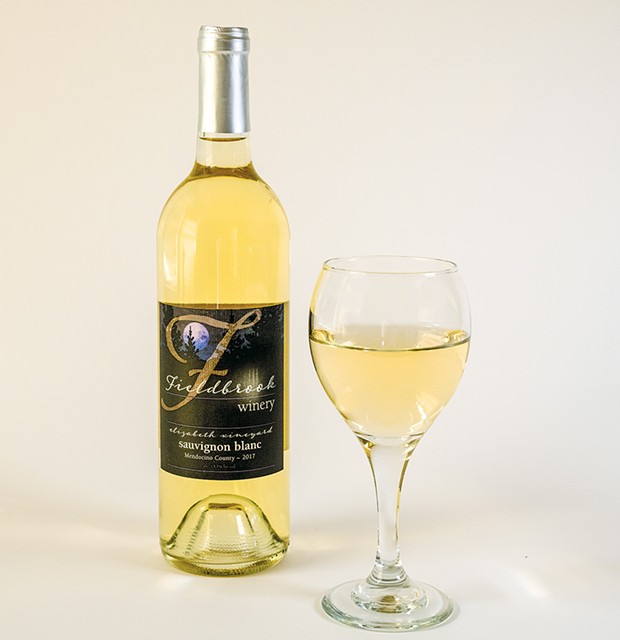[
{
"name": "Top Stories Video Pair",
"insertPoint": "7",
"component": "17087298",
"parentWrapperClass": "fdn-ads-inline-content-block",
"requiredCountToDisplay": "1"
}
]
Before I had ever tasted a sauvignon blanc, I was told it smelled like cat pee. The wine dork who told me this didn't even mean it in a bad way and I was so very confused. I mean ... I grew up with cats. My mom was completely incapable of turning away a stray. I knew what cat pee smelled like and, as far as I was concerned, that scent could never illicit positive reactions — especially in my wine.
But to my surprise, this is a common descriptor used for this varietal by professionals worldwide. After my many years dedicated to drinking wine in the name of science, though I have found some sauvignon blancs that maybe smell a little bit like cat pee if you really overthink it, I have yet to taste one that triggers the memory of when Puffy the stray tomcat peed in the heating vent outside my bedroom. And trust me — that memory is easily recalled. And of course, sauvignon blanc has to have something going for it, seeing as it is the second most popular white wine grape in the world.
Traditionally, sauvignon blanc is a delicious, bright, acidic white wine with notes of citrus, herbaceous undertones and often a crisp minerality that other wines don't showcase. In other words — it's the perfect summer wine. The lemon-like, mouth puckering acid is perfect poolside. The slight hints of sage and thyme are an ideal respite from your summer landscaping. The refreshingly clean finish is just what you need while you grasp for your sanity and count down the days until school starts again. It's also most often the wine of choice for the "anything-but-chardonnay" drinkers, as it is the antithesis to the creamy richness of the oaked chardonnays flooding today's market. (Don't spill your Rombauer, chardonnay fans. I've got an article coming for y'all soon).
"Right on," you might say, "I'll go to the store right now to get a bottle!" But not so fast. No wine shopping venture is without its share of a baffling array of labels. Like all wines, no two sauvignon blancs are the same, and where it's from is your first clue, Nancy Drew.
The big dogs in the import sauvignon blanc game are France and New Zealand, specifically the Loire Valley and Marlborough, respectively. I picked up a couple of examples from some local shops to compare to one another but, more importantly, to some popular sauvignon blancs from Humboldt County winemakers. Spoiler alert: None of them smells like cat pee.
The sauvignon blanc grape originated in Bordeaux, France, but the Loire Valley is where it has earned the majority of its gold stars. Specifically, Sancerre, an appellation on the west side of the Loire river with soils ranging from dense in limestone and gravel to white, chalky soils that extend all the way to the white cliffs of Dover in England. A generally cool climate that elevates acid in the grapes and the distinctive mineral-like finish from the limestone combine to make wine from Sancerre stand out as one of the most elegant representations of the varietal.
When shopping for French wines, their labels will never tell you what the grape is — they will only, very prominently, state where it's from and then expect you to know what that means. I picked up the "Sancerre" from Libation, where owner NaRayan Urciuoli consistently brings in weird and awesome import wines. It's a 2017 from Dominique Crochet and I picked it up for $25.50. It's a good representation of the French style with notes of fresh tangerine and lemon rind, a slight hint of rose petals and the minerally finish of limestone that sets Sancerre apart from the pack.
Although France is the birthplace of sauvignon blanc, many experts argue that New Zealand, and specifically Marlborough, has stolen the crown for the best producer of the grape. The style is very different from the French offerings. Even though Marlborough is the south island's warmest region with the longest hours of sunlight, it is still considered a cool maritime climate, which is perfect for sauvignon blanc. Generally speaking, it is juicier, more tropical and herbaceous — even sometimes grassy. The best example I found in retail locally is a 2017 Hooks Bay that I picked up at Murphy's Market in Cutten for $11.99. This wine leads with citrus flavors of key lime, ruby grapefruit and tangerine with a floral note of lilac and finishes with a slight hint of fresh grass and thyme. It's bright, fresh and fruity but has just a touch of bitterness akin to grapefruit at the bottom which balances it really nicely.
So how does Humboldt County stand up to the sauvignon blanc giants of the world? Pretty well, actually. The HumCo style varies widely and deviates from these other more classic examples, but all are delicious and show each winemaker's individual style. We have a lot of excellent local selections to choose from but when I set out to write this article, the names that I heard most from enthusiastic consumers were Fieldbrook Winery and Old Growth Cellars.
Fieldbrook Winery produces one of my longtime local favorites — a sauvignon blanc from Elizabeth Vineyard in Mendocino County produced by winemaker Phil Lockwood. I picked up the newest 2018 vintage from the winery's tasting room for $19. This is a light, subtle sauvignon blanc that shows as clean and bright, with notes of lychee, jasmine, meyer lemon zest and sour orange. As I discovered first hand, this wine pairs perfectly with a stroll around the ponds bordering Fieldbrook Winery's bustling tasting room, watching the kids explore the lily pads in their paddle boats and enjoying the heady perfume of the French lavender blooming in the summer heat.
The 2017 Old Growth Cellars sauvignon blanc is the most unique of all of these examples. Winemakers Bob Lima and Jim Pastori put this wine through a secondary fermentation process called "malolactic fermentation" or "ML" because that's a mouthful. This process converts the malic acids in the wine (think of the tartness of an apple) into lactic acids (think milk) which makes for a creamy, full-bodied mouth feel. This process is usually reserved for making buttery chardonnays and I don't think I've ever actually tasted a sauvignon blanc that went through it. The result gives this wine some uncommon notes of lemon meringue pie, grapefruit zest, Granny Smith apple, sourdough toast and star thistle honey. Old Growth Cellars' tasting room stands out as a more masculine, industrial space with wood grains and metal finishes attached to its impressive winemaking facility and event space. You can purchase this wine direct from the producer at the tasting room for $17.
So folks, don't let wine dorks named Kyle scare you away from sauvignon blanc by talking about cat pee. In fact, it could be the perfect pairing with your summer adventures. Whether you're looking to explore some import selections, or shopping for Humboldt brands, I encourage you to shop local. Find your local import shops. Go meet the winemakers and owners at their tasting rooms. And most importantly, try some new wines! Sauvignon blanc could be exactly what you need if you're looking for anything but chardonnay.
Editor's note: In the interest of full disclosure, it should be noted that the Journal's majority owner is also a co-owner of Fieldbrook Winery.
Erin Young is a wine educator, consultant and Wine & Spirit Education Trust student. She lives in Eureka.
Speaking of...
-

Wildlife Emergency, Guns and Funky Wine
Sep 15, 2023 -

Music Tonight: Thursday, Aug. 24
Aug 24, 2023 -

Music Tonight: Thursday, Aug. 3
Aug 3, 2023 - More »
Comments
Showing 1-1 of 1
more from the author
-
Snapshot in a Glass
Miles Garrett's natural wines
- Sep 14, 2023
- More »


































